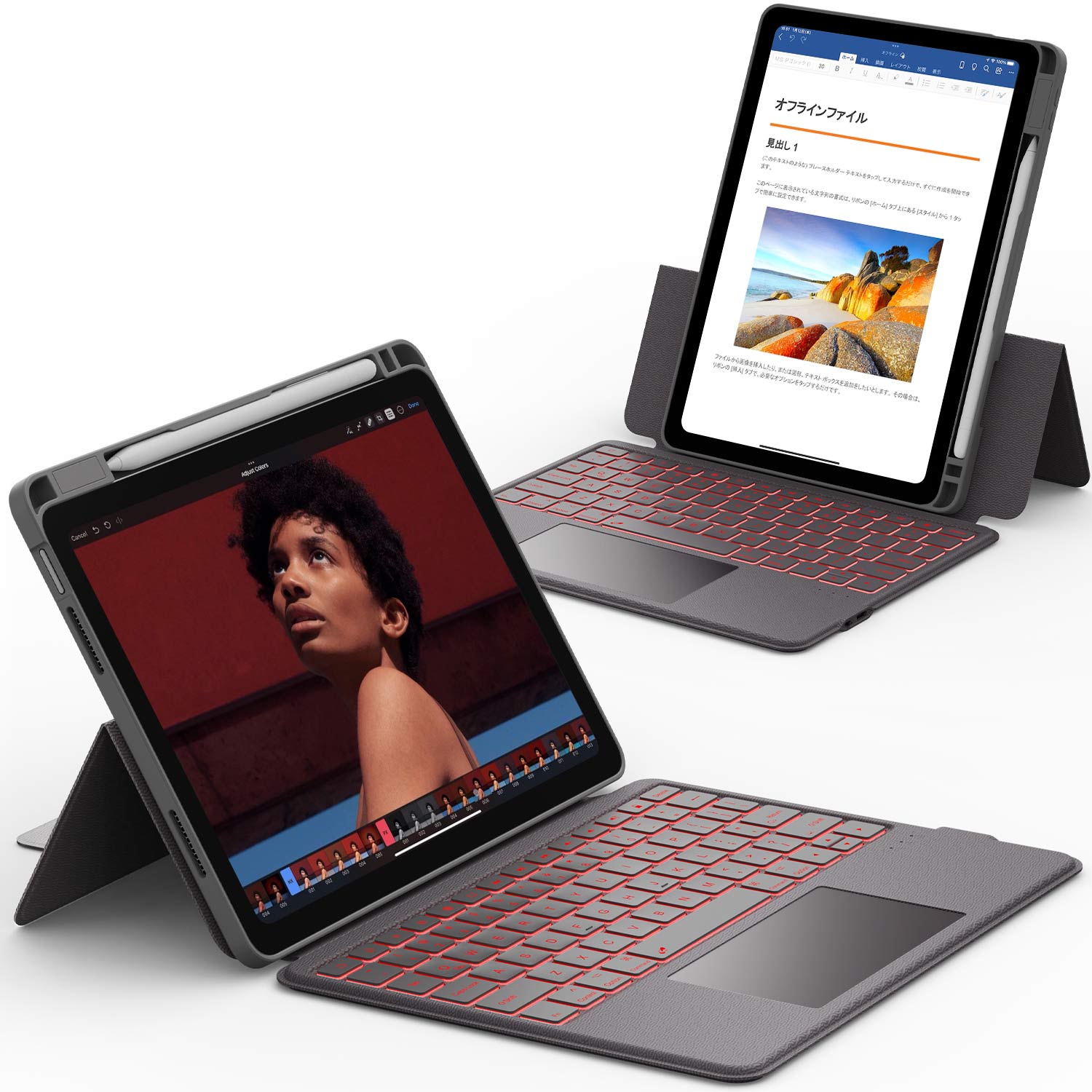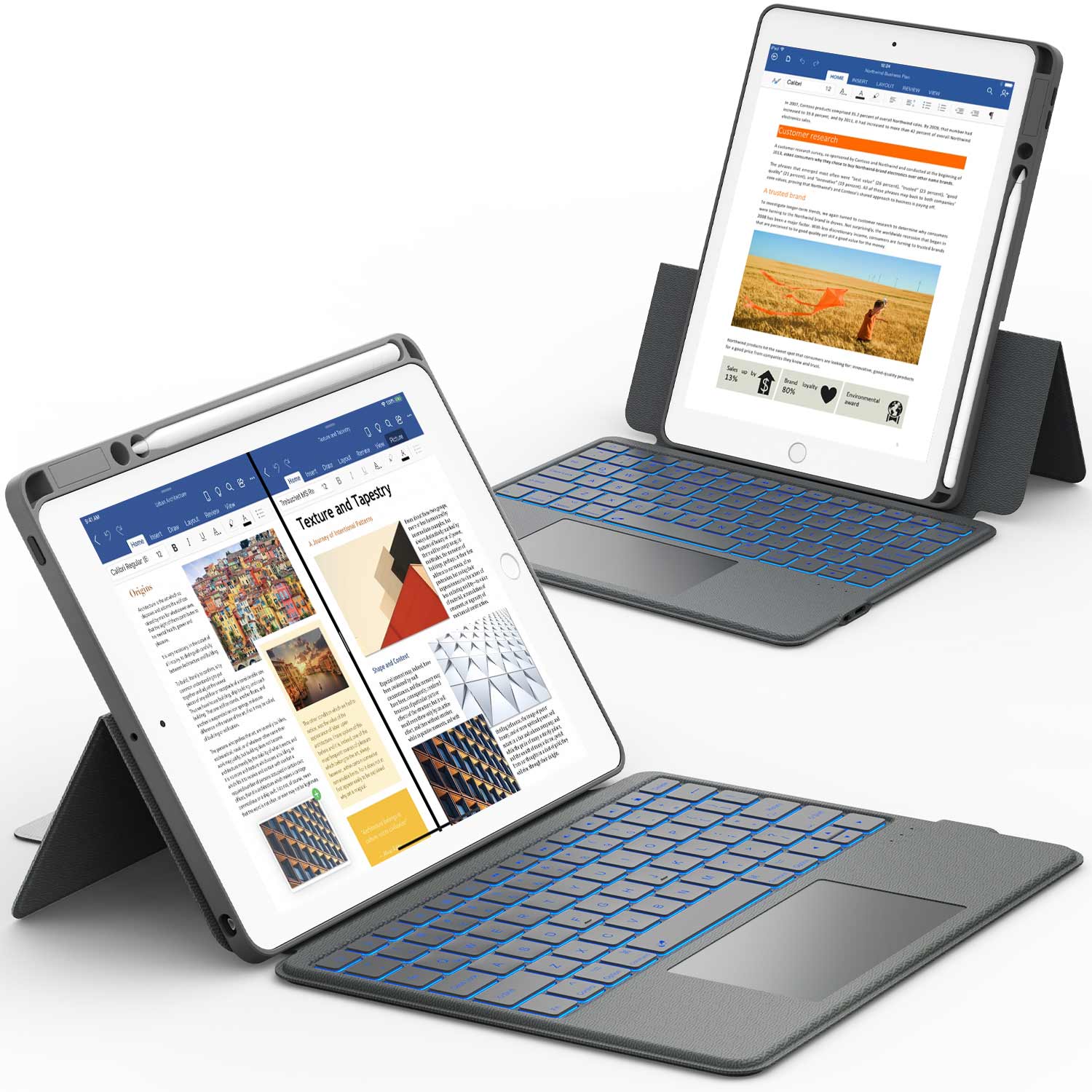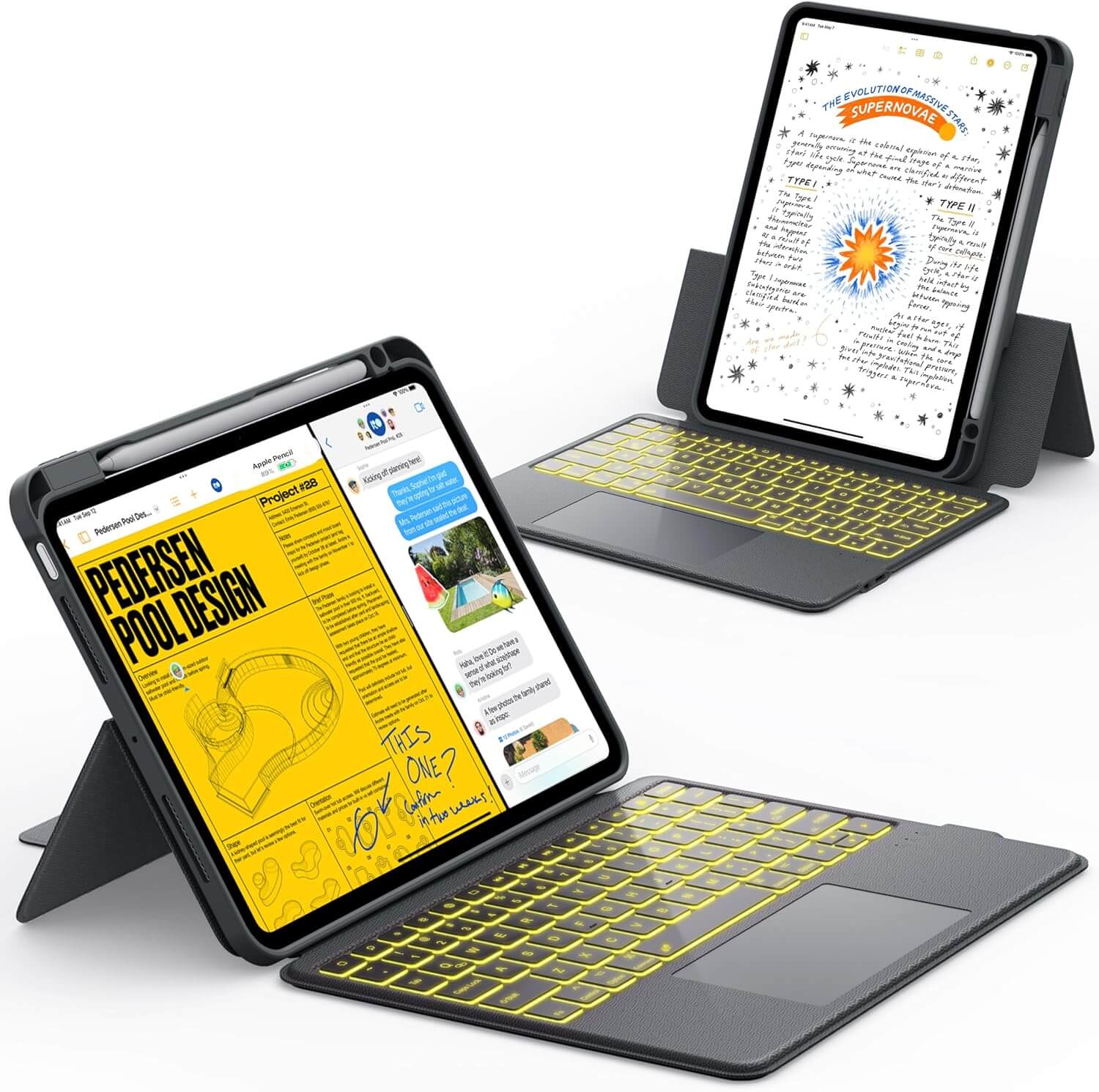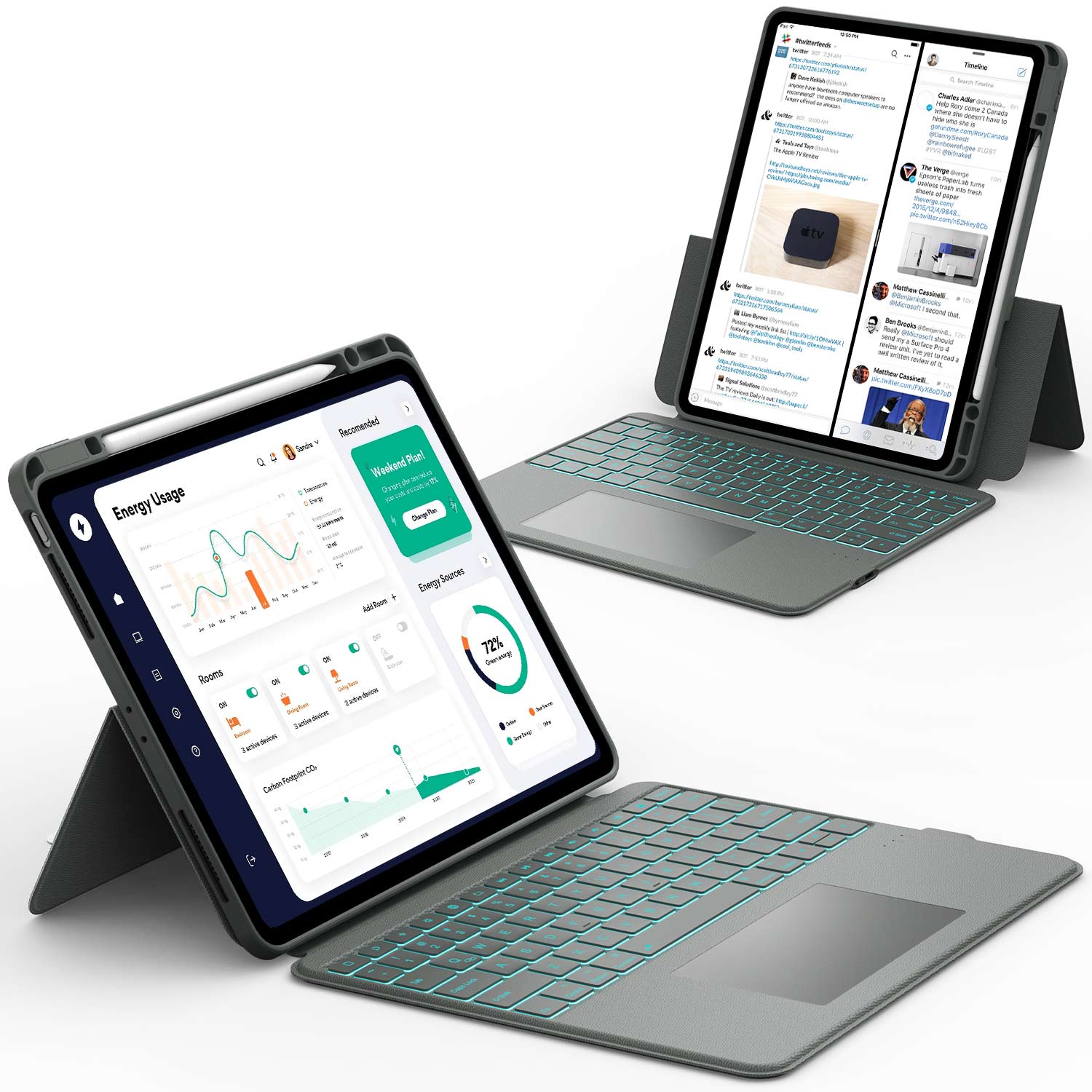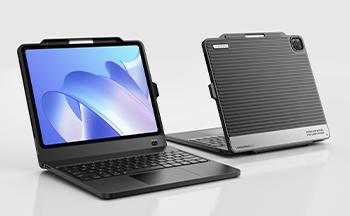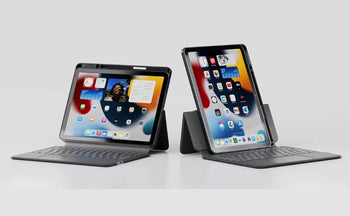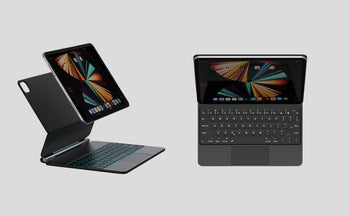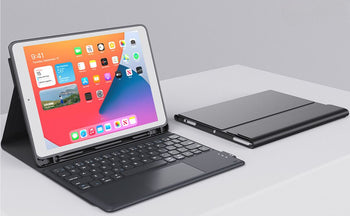Choosing the right iPad can feel overwhelming with so many options out there. Whether you're looking for something basic or a high-end model, it’s important to know what fits your budget and needs. In this article, we’ll break down how to choose the right iPad for your budget, so you can make an informed decision without breaking the bank.
Key Takeaways
- Set a clear budget before you start shopping.
- Think about the features you truly need.
- Consider older iPad models for better deals.
- Evaluate how you plan to use the iPad in your daily life.
- Look for discounts and refurbished options to save money.
Understanding Your Budget

Setting a Realistic Price Range
Okay, so you want an iPad. Awesome! But before you get lost in the shiny new features, let's talk money. Knowing how much you're willing to spend is the first, and maybe most important, step. It's easy to get sucked into wanting the latest and greatest, but do you really need it? iPads range from a few hundred dollars to well over a thousand, so having a number in mind will seriously narrow down your options. Think about what you can comfortably afford without sacrificing other important stuff. Maybe start by looking at your bank account and figuring out what's realistic. Don't forget to factor in taxes and any accessories you might want, like a case or Apple Pencil.
Identifying Essential Features
Once you've got a price range, it's time to think about what you actually need in an iPad. What are you going to use it for? Is it mainly for browsing the web and watching videos? Or do you plan on using it for work, school, or creative projects? Make a list of the features that are non-negotiable. For example:
- Storage: How much space do you need for apps, photos, and files?
- Screen Size: Do you want something compact and portable, or a larger screen for better viewing?
- Performance: Do you need a powerful processor for demanding tasks like video editing or gaming?
- Connectivity: Do you need cellular connectivity, or will Wi-Fi be enough?
Prioritizing these features will help you find an iPad that meets your needs without breaking the bank. Don't get caught up in features you won't actually use. It's better to have a slightly older model with the features you need than the newest one with a bunch of extras you don't.
Considering Older Models
Don't automatically dismiss older iPad models! Apple supports its devices for a long time, so even an iPad that's a few years old can still be a great option, especially if you're on a tight budget. You can often find older models at significant discounts, either new or refurbished. They might not have all the latest bells and whistles, but they can still handle most everyday tasks just fine. Plus, they're a good way to get into the iPad ecosystem without spending a fortune.
Older iPads can be a fantastic value. They often offer similar performance to newer models for basic tasks, and you can save a lot of money by going with a slightly older generation. Just make sure it's still supported by Apple's latest software updates.
Here's a quick comparison of what you might expect from different iPad models based on their age:
| Model Age | Typical Use Cases | Potential Savings |
|---|---|---|
| 1-2 Years | Great for most tasks, including some gaming | Moderate |
| 3-4 Years | Good for browsing, streaming, and light productivity | Significant |
| 5+ Years | Suitable for basic tasks like reading and email | Very High |
Evaluating iPad Models
Choosing the right iPad involves more than just picking the newest one. It's about understanding the different models available and how they fit your specific needs. Apple offers a range of iPads, each with its own set of features, performance capabilities, and price points. Let's break down the key aspects to consider when evaluating your options.
Comparing iPad Generations
Each new iPad generation typically brings improvements in processing power, display technology, and features. However, these upgrades don't always justify the higher price tag for every user. For example, the latest iPad Pro with the M4 chip is a powerhouse, but if you primarily use your iPad for browsing and streaming, an older generation might suffice. It's worth checking third-party retailers like Amazon or Best Buy to find deals on previous generations. Older iPad Pro models, like the ones from 2018, might not be worth buying anymore. They're just too old. Consider the iPad (10th generation) and iPad (A16) models when comparing.
Understanding Model Differences
Apple's iPad lineup includes several distinct models, each targeting a different type of user:
- iPad Pro: The top-of-the-line model, offering the best performance, display technology, and features. Ideal for professionals and power users.
- iPad Air: A balance of performance and portability, suitable for a wide range of tasks.
- iPad: The standard model, offering a good experience at a more affordable price.
- iPad mini: The most portable option, great for on-the-go use and reading.
Understanding these differences is key to making the right choice. The iPad Pro M4 remains the most advanced tablet on the market. Available in 11-inch and 13-inch sizes, it caters to professionals, creatives, and power users who demand top-tier performance.
Assessing Performance Needs
Think about what you'll primarily use your iPad for. If you plan to do a lot of video editing, gaming, or other demanding tasks, you'll want a model with a powerful processor and ample RAM. On the other hand, if you mainly use your iPad for browsing the web, checking email, and watching videos, you can get away with a less powerful model. Consider these points:
- Processor: The A-series chips in the standard iPad and iPad Air are generally sufficient for everyday tasks.
- RAM: More RAM allows you to run more apps simultaneously without experiencing slowdowns.
- Storage: Choose a storage capacity that meets your needs. Consider how much space you'll need for apps, photos, videos, and other files.
Assessing Size and Portability
When picking an iPad, it's not just about the specs; it's also about how it fits into your life. Do you want something you can easily toss in a bag, or are you okay with a larger screen for better viewing? Let's break down what to think about when it comes to size and portability.
Choosing the Right Screen Size
The screen size is a big deal. The iPad Mini is super portable, great for reading on the go or quick tasks. Then you have the standard iPad and iPad Air, which offer a good balance between screen real estate and portability. Finally, the iPad Pro comes in larger sizes, which are awesome for creative work or watching videos, but they're less convenient to carry around. Think about what you'll mostly be using the iPad for. If it's primarily for travel, a smaller screen might be better. If it's for design work, you might want to compare iPad generations with bigger displays.
Considering Weight and Thickness
Weight and thickness go hand-in-hand with screen size. A bigger screen usually means a heavier and thicker device. The iPad Mini is incredibly light, making it easy to hold for extended periods. The larger iPad Pro models can feel a bit hefty, especially if you add a keyboard case. Consider where you'll be using your iPad most often. If you're always on the move, every ounce counts. If it's mostly for home use, the weight might not be as important.
Evaluating Carrying Options
How are you planning to carry your iPad around? Will it be in a backpack, a purse, or just in your hands? This will influence your size choice. A smaller iPad fits easily into most bags, while a larger one might require a dedicated compartment or a larger bag altogether. Also, think about accessories like keyboard cases, which can add bulk and weight.
Consider the overall package. A sleek, lightweight iPad can become significantly less portable with the addition of a heavy-duty case and keyboard. Think about your daily routine and how the iPad will fit into it. If you commute on a crowded train, a smaller, more manageable device might be a better choice. If you mostly use it at home or in the office, the size might not be as critical. — That’s why the Chesona slim keyboard case is a great choice—it adds minimal bulk while giving you laptop-style typing on the go.
Here's a quick rundown:
- iPad Mini: Best for extreme portability.
- iPad Air: Good balance of size and weight.
- iPad: A solid choice for everyday use.
- iPad Pro: Offers the largest screen, but less portable.
Compatibility with Accessories
Choosing the right iPad isn't just about the device itself; it's also about the ecosystem of accessories that can expand its functionality. Apple offers a range of accessories, but compatibility varies between iPad models. It's important to check what works with what before you buy anything.
Identifying Compatible Keyboards
Keyboards can turn your iPad into a productivity powerhouse. Looking for a reliable keyboard to boost your productivity? The Chesona iPad Keyboard Case combines a responsive typing experience with full protection—perfect for work, school, or everyday use. Apple's Smart Keyboard and Magic Keyboard are popular choices, but they aren't universally compatible. For example, the older Smart Keyboard Folio works with specific iPad Air and iPad Pro models, while the Magic Keyboard has its own compatibility list. Third-party keyboards offer more flexibility, but it's still important to confirm they're designed to work with your iPad's size and connector type. Make sure to check the iPad model before purchasing a keyboard.
Choosing the Right Apple Pencil
The Apple Pencil is a game-changer for creative tasks and note-taking. However, there are different generations, and they don't all work with every iPad. The original Apple Pencil (1st generation) connects via Lightning, while the Apple Pencil (2nd generation) attaches magnetically and charges wirelessly on compatible iPad Pro and iPad Air models. The Apple Pencil (USB-C) is compatible with all iPads that have a USB-C port. Always verify that the Apple Pencil you want is compatible with your chosen iPad.
Considering Other Accessories
Beyond keyboards and pencils, there's a whole world of other accessories to consider. Cases, screen protectors, adapters, and even external storage devices can enhance your iPad experience. When it comes to cases, make sure the case is specifically designed for your iPad model to ensure a snug fit and proper access to ports and buttons. Adapters can be useful for connecting older accessories or peripherals.
Don't assume that all accessories will work with your iPad. Always check the compatibility information on Apple's website or the accessory manufacturer's website before making a purchase. This can save you from frustration and the hassle of returns.
Determining Usage Scenarios

Before you pull the trigger, really think about how you're going to use your iPad. It's easy to get caught up in specs and deals, but the best iPad is the one that fits seamlessly into your life. Are you envisioning it as a replacement for your laptop, a portable entertainment hub, or something in between? Answering these questions will help narrow down your choices.
Casual Use vs. Professional Use
Are you planning to use your iPad mainly for browsing the web, checking email, and watching videos? Or do you need it for more demanding tasks like graphic design, video editing, or coding? The answer to this question will heavily influence the kind of processing power and storage you'll need. For casual use, a basic iPad model might be sufficient. However, for professional use, you'll likely want to consider an iPad Air or iPad Pro with more RAM and a faster processor. It's also worth thinking about accessories like the Apple Pencil or a keyboard case if you plan on using it for work. Consider the Chesona keyboard case, designed for both comfort and performance. It's ideal for turning your iPad into a functional workstation without the weight of a laptop.
Gaming and Entertainment Needs
If gaming is a priority, you'll want an iPad with a powerful processor and a good display. The refresh rate is also important for smooth gameplay. Consider the storage capacity too, as games can take up a lot of space. For entertainment, think about the screen size and audio quality. Do you want a larger screen for immersive viewing? Are good speakers or headphone jack important to you?
Educational and Creative Applications
For students, an iPad can be a great tool for taking notes, reading textbooks, and doing research. The Apple Pencil can be especially useful for handwriting notes and creating diagrams. If you're into creative pursuits like drawing, painting, or music production, you'll want an iPad with a high-quality display and a responsive processor. Consider the compatibility with creative apps and accessories like styluses and MIDI controllers.
It's easy to underestimate how much you'll actually use an iPad. Think about all the little things you do on your phone or laptop – reading articles, managing your calendar, video calls – and imagine doing them on a bigger screen. This can help you justify spending a bit more for a model that will truly enhance your daily life.
Exploring Deals and Discounts

Finding the right iPad for your budget isn't just about setting a price; it's also about being smart with how you shop. There are plenty of ways to snag a deal, from seasonal sales to refurbished models. Let's explore some options to help you save some money.
Finding Seasonal Sales
Keep an eye out for seasonal sales events. Retailers often offer significant discounts during specific times of the year.
- Back to School: Great deals on iPads, especially for students and educators.
- Black Friday/Cyber Monday: Some of the biggest discounts of the year on electronics.
- Holiday Season: Retailers often have promotions leading up to the holidays.
- Amazon Prime Day: Exclusive deals for Prime members, often including Apple products.
Considering Refurbished Options
Refurbished iPads can offer substantial savings. These devices have been returned to Apple or a third-party seller, inspected, repaired (if necessary), and re-certified for sale. They usually come with a warranty, giving you peace of mind.
Buying refurbished is a great way to save money and get a device that is almost as good as new. Just make sure you buy from a reputable seller to avoid any issues.
Utilizing Trade-In Programs
Many retailers, including Apple, offer trade-in programs where you can exchange your old devices for credit towards a new iPad. The value of your trade-in depends on the model and condition of your device. This can significantly lower the upfront cost of your new iPad.
Here's a quick example of how trade-in values might look (these are just examples, actual values vary):
| Old iPad Model | Condition | Estimated Trade-In Value |
|---|---|---|
| iPad (5th Generation) | Good | $50 |
| iPad Air (3rd Gen) | Good | $100 |
| iPad Pro (11-inch) | Good | $200+ |
Making the Final Decision

Okay, you've done your research, weighed the options, and hopefully haven't driven yourself completely crazy in the process. Now comes the moment of truth: actually picking an iPad. It's easy to get bogged down in specs and reviews, but try to take a step back and remember what you actually need the iPad for. Don't overthink it too much!
Weighing Pros and Cons
Time to make a list! Seriously, grab a piece of paper (or use a notes app, I guess, since we're talking iPads) and jot down the pros and cons of your top two or three choices. Consider things like screen size, storage, processor speed, and, of course, price. Think about which features are non-negotiable and which ones you're willing to compromise on. For example, if you plan on doing a lot of drawing, Apple Pencil compatibility is a must. If you just want to watch Netflix, maybe that's less important.
Seeking User Reviews
Manufacturer websites are great, but they're also designed to sell you something. User reviews can offer a more balanced perspective. Look for reviews on sites like Amazon, Best Buy, or even tech blogs. Pay attention to recurring themes – are people consistently praising the battery life or complaining about the camera quality? Take everything with a grain of salt, of course, but user reviews can be a valuable resource for spotting potential issues or hidden gems.
Testing Before Purchase
If at all possible, try to get your hands on the iPad before you buy it. Head to an Apple Store or a retailer that has demo models on display. Play around with the interface, test out the camera, and see how it feels in your hands. This is especially important if you're unsure about the size – a 12.9-inch iPad might seem great on paper, but it could be unwieldy in practice. Actually using the device can help you make sure you're happy with your iPad purchase.
Ultimately, the best iPad for you is the one that fits your needs and your budget. Don't feel pressured to buy the latest and greatest model if an older or less expensive option will do the job just as well. Trust your gut, and happy shopping!
Wrapping It Up
Choosing the right iPad can feel like a big task, but it doesn't have to be. Start by figuring out your budget and what you really need it for. Do you want to watch movies, play games, or maybe do some work? Once you know that, it’s easier to narrow down your options. Remember, you don’t have to go for the latest model if an older version fits your needs just fine. And don’t forget about accessories like the Apple Pencil or keyboard, which can change your experience. In the end, just pick what works best for you and your wallet.
Frequently Asked Questions
What is the best way to set a budget for buying an iPad?
Start by deciding how much you can spend. iPads can cost anywhere from around $350 to over $1,000. Knowing your budget helps you narrow down your options.
What features should I consider when choosing an iPad?
Think about what you need the iPad for, like watching videos, playing games, or doing schoolwork. This will help you pick the right model.
Are older iPad models worth buying?
Yes, older models can be a good deal. They often work well for basic tasks and are usually cheaper than the latest versions.
How do I choose the right screen size for my iPad?
Consider how you plan to use it. If you want something portable, a smaller screen might be better. For watching movies or gaming, a larger screen could be more enjoyable.
What accessories should I think about when buying an iPad?
Look for accessories that match your iPad model, like keyboards and Apple Pencils. These can enhance your iPad experience.
How can I find the best deals on iPads?
Check for sales during holidays, look for refurbished models, and see if you can trade in your old device for a discount.
